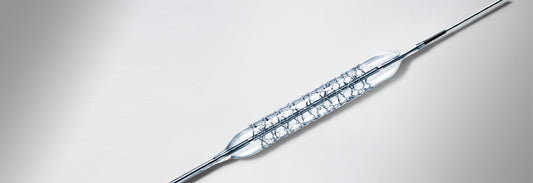Stents are frequently used in the treatment of vascular diseases such as coronary artery disease, peripheral artery disease, and aneurysms. There are different types of stents that have different characteristics and features depending on their intended use and application area.
Types of stents
- Coronary stents: used in the coronary arteries to eliminate narrowing or blockages and restore blood flow. There are two types of coronary stents: coated stents and uncoated stents.
- Peripheral artery stents: used in the arteries of the legs, arms, and other peripheral body parts to eliminate narrowing or blockages.
- Gastrointestinal stents: used to treat narrowing or blockages in the esophagus, stomach, or intestines.
- Ureteral stents: used in the ureters to eliminat or support blockages or narrowing after surgical procedures.
- Tracheal and bronchial stents: used in the airways to eliminate or prevent narrowing or blockages.
Types of metal stents
Stents are typically made of metal or plastic and can be either permanent or temporary. There are different types of metal stents that have different characteristics and features depending on their intended use and application area:
- Stainless steel stents: frequently used in the treatment of coronary artery disease. They are relatively rigid and may be more difficult to place than more flexible stent types.
- Nitinol stents: made of a nickel and titanium alloy and are very flexible and shapeable when heated. Therefore, Nitinol stents can adapt to the contours of the vessel, making them particularly useful in the treatment of peripheral artery occlusions.
- Cobalt-chromium stents: frequently used in coronary artery surgery and known for their durability and low restenosis rate.
- Platinum-chromium stents: have similar characteristics to cobalt-chromium stents but are typically thinner and more flexible, making them suitable for placement in smaller vessels.
- Iridium oxide stents: designed to reduce the formation of blood clots and restenosis rate.
Different coatings
There are different types of coatings that can be applied to stents to improve their effectiveness and reduce the risk of complications:
- Drug-eluting coatings: these coatings contain drugs that are slowly released to prevent the growth of tissue inside the stent and reduce the formation of blood clots.
- Antibacterial coatings: these coatings are intended to reduce the risk of infection at the implantation site by inhibiting or preventing the growth of bacteria.
- Biologically active coatings: these coatings may contain bioactive molecules that can promote or inhibit the growth of cells and tissues in the body.
- Polymer coatings: these coatings can help reduce the friction between the stent and the surrounding tissue.
- Bioresorbable coatings: these coatings are designed to degrade over time and be absorbed by the body. This can help reduce the risk of long-term complications.


